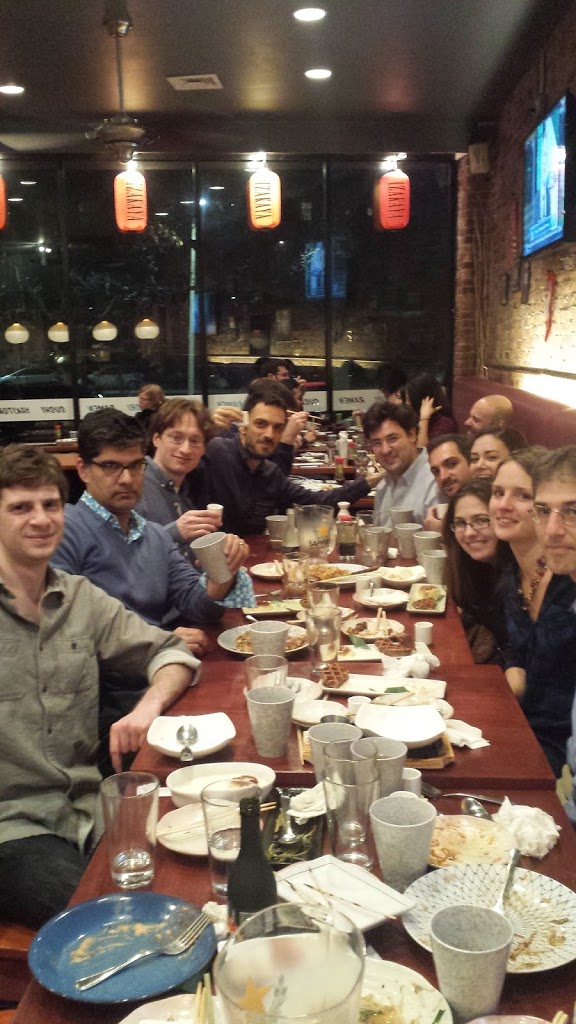This was a hell of a year, and so the Datta lab (minus a few early departures for much-deserved vacation – Tari and Ralph, you were missed!) did it up – a little izakaya action, followed by vodka gimlets at Eastern Standard with the Sabatini, Harwell and Stevens labs. This is a true story: there was a live cockroach on our pickled vegetables, and after swapping it out, WE ALL KEPT EATING! Says a lot! Happy holidays to all – here’s looking forward to a great 2016.
 |
| Everyone happy….except Bob, who wanted another cream puff…. |
This video is a metaphor, in which Paul is alcohol, and Masha is the entire rest of the lab